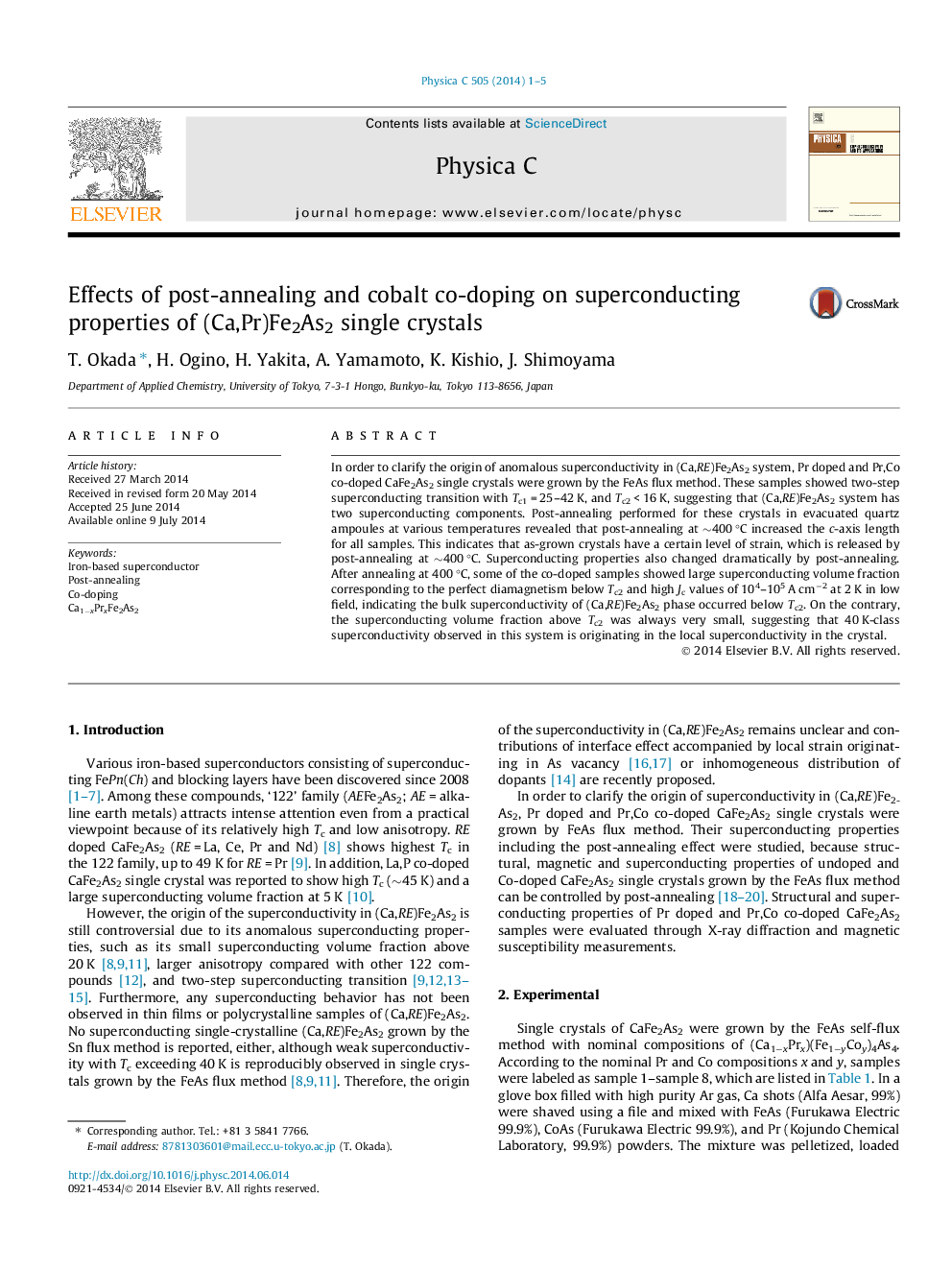| Article ID | Journal | Published Year | Pages | File Type |
|---|---|---|---|---|
| 1818165 | Physica C: Superconductivity and its Applications | 2014 | 5 Pages |
•Post-annealing at 400 °C killed superconductivity for Co-free sample.•Pr,Co co-doped samples maintained superconductivity even after annealing.•Two-step superconducting transition was observed via magnetization measurement.•Bulk superconductivity of low-Tc component was confirmed.•Superconducting volume fraction of high-Tc component was always small.
In order to clarify the origin of anomalous superconductivity in (Ca,RE)Fe2As2 system, Pr doped and Pr,Co co-doped CaFe2As2 single crystals were grown by the FeAs flux method. These samples showed two-step superconducting transition with Tc1 = 25–42 K, and Tc2 < 16 K, suggesting that (Ca,RE)Fe2As2 system has two superconducting components. Post-annealing performed for these crystals in evacuated quartz ampoules at various temperatures revealed that post-annealing at ∼400 °C increased the c-axis length for all samples. This indicates that as-grown crystals have a certain level of strain, which is released by post-annealing at ∼400 °C. Superconducting properties also changed dramatically by post-annealing. After annealing at 400 °C, some of the co-doped samples showed large superconducting volume fraction corresponding to the perfect diamagnetism below Tc2 and high Jc values of 104–105 A cm−2 at 2 K in low field, indicating the bulk superconductivity of (Ca,RE)Fe2As2 phase occurred below Tc2. On the contrary, the superconducting volume fraction above Tc2 was always very small, suggesting that 40 K-class superconductivity observed in this system is originating in the local superconductivity in the crystal.
